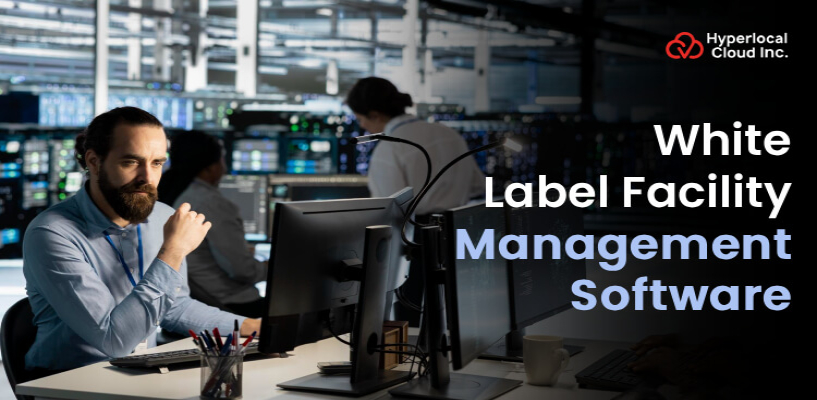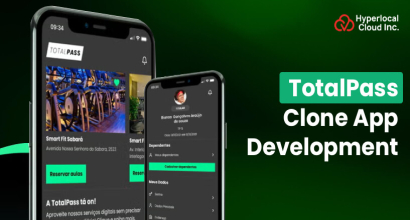The facility management software is a basic perspective on the operation of any organization that owns or manages physical property, including buildings, equipment, and infrastructure. This includes various tasks, such as regular maintenance, repair work, supplier administration, space utilization management, and ensuring safety compliance.
Current market trends suggest that facility leaders can now use the mobile app to gather information, update work orders, and cooperate with their teams soon. Another key trend is the incorporation of Internet of Things (IoT) devices, which incessantly monitor equipment requirements, drive consumption, and space occupancy. This data, merged with AI, enables predictive maintenance, reducing time and saving costs.
White label facility management software is achieving popularity among organizations that want to offer customized software quickly and affordably to their users. These pre-built platforms can become freely rebranded and tailored without requiring the advancement of custom software from scratch.
What is Facility Management Software?
Want to offer seamless facility management under your brand?
How Does Facility Management Software Work?
1. Setup and Asset Registration
This involves installing software and entering information about buildings, floors, rooms, and assets located in all areas. Users can create profiles with different roles, such as facility manager, technicians, suppliers, and tenants, each with access to specific traits depending on their needs.
2. Request Logging
When there is a problem with maintenance, users offer requests through the software portal or mobile app. These requests are logged in as a "work order" and contain elaborate information about the problem, including any helpful files such as location, urban, and photo.
3. Work Order Assignment and Scheduling
The steps automatically prioritize work orders based on their urgency and assign them to the trustworthy suppliers. These skills consider factors such as website, access, and proximity. For ordinary functions, the software determines preventive maintenance activities with a mechanized reminder to complete at the moment.
4. Task Execution and Documentation
This enables users to access information on their mobile devices, including all relevant work details. They do the necessary maintenance, record the steps taken, upload images if required, and update the "complete" work order position. This real-time documentation creates a detailed maintenance history, which can be reviewed at any time.
5. Approval and Escalation
If the work order requires approval of the manager (for example, if there is more than one budget limit), the system routes the request for cancellation. If the problems are not solved within the prescribed time limit, the software helps high officials avoid delays.
6. Reporting and Analytics
This uses reporting tools to track trends for maintenance, costs, performance, and maintenance compliance. Data insight enables decision-making, improves the workflow, and facilitates a more accurate budget plan.
7. Integration with Other Systems
Many FMS platforms are integrated with other corporate tools, such as ERP systems, energy management platforms, and building automation systems, which allows for seamless data exchange and extensive control convenience.
Why Investing in White Label Facility Management Software is Beneficial?
Choosing a white label facility management software offers several fundamental advantages for companies that want to enter the facility management software market or expand their service portfolio without a big investment.
1. Fast Time to Market
Building a facility management software from scratch can take months or even several years of development, testing, and integration. White labeling is a pre-built solution that allows you to customize the branding, with key traits, and launch the platform quickly. This enables you to capitalize on business prospects more rapidly than competitors who develop software internally.
2. Lower Development Costs
Developing a facility management software requires skilled developers, UX designers, testers, and maintenance teams. This can become prohibitively overpriced. With a white label solution, you pay a licensing or subscription fee that is a fraction of the cost required to form your own operation.
3. Customizable Branding
Despite using third-party technology, a white label solution allows logo, color, fonts, and sometimes perfect customization of the user experience. This will encourage users to attract and remain loyal to your brand.
4. Ongoing Updates and Support
White labels suppliers constantly update the software, fix errors, increase security, and add new features. You automatically pull out of these reforms without further advancement costs or time.
5. Flexibility and Scalability
White label solutions are scalable, modular, effective, and reliable. As your business grows, you can link new components, bring diversity to the user base, and expand the use on several websites without development.
6. Lower Risks
White label solutions have already been tested, reducing the risk of software failure, security breaches, and dissatisfaction with customers who often come up with new software development projects.
The Emerging Key Features of a Facility Management Software
A white label facility management software offers numerous features and functionalities that facilitate different industries and their related organizations. Some of the most relevant and efficient features of the software are mentioned below.
1. Centralized Dashboard
This will act as a command center and provide convenience for managers and officials to have immediate observation of the most important information. The dashboard shows larger matrices and statistics, such as the open and complete functions of the number of orders, pending maintenance functions, assets, and upcoming inspections.
2. Work Order Management
One of the main features of the software is work order management. This module enables users, whether they are employees, tenants, or facilities, who are competent and can easily present maintenance requests. Once it has submitted the request, there will be a work order that can be traced during its life cycle.
3. Asset Management
Property refers to physical resources that depend on HVAC systems, electrical equipment, furniture, or vehicles. The Asset Management feature serves as a digital catalog of all these assets, providing detailed information about each one.
4. Preventive Maintenance Scheduling
Instead of fixing the equipment, it breaks down, and supports preventive maintenance of modern construction management. This feature enables managers to create regular inspections and plan for service based on the recommendations, use hours or time intervals.
5. Vendor and Supplier Management
Many convenience-related tasks require services from external suppliers or contractors, such as cleaning services, security providers, or special repair teams. The seller administration facility completes all the information related to these third parties in one place.
6. Space and Room Booking
The adaptation of the use of the physical space is becoming increasingly important, especially with the increase in hybrid work models and shared office environments. The will allows employees to check the availability of meeting rooms, desks, or general areas and easily reserve them.
7. Compliance and Safety Management
The app should follow a wide range of rules and safety standards. Compliance and safety management help trace inspection, certificates, and security audits. It plans upcoming match functions, stores documents, and alerts managers when a time limit is reached. Thus, this function reduces risks, prevents harm, and creates a safe environment for living.
8. Reporting and Analytics
Data-driven decision-making is an important advantage of the software for modern facilitation management. Reporting and analysis functions compile data from all modules and generate adaptable reports. These reports cover maintenance costs, proprietary performance, technician productivity, selling efficiency, and compliance status.
9. Mobile Access and Technician App
Field technicians and employees often work away from the desk, so a mobile app or mobile-friendly interface is important. This feature allows technicians to obtain work orders, update the situation, now the active information and upload images directly from the smartphone or tablet.
10. User Role and Permission Management
To maintain safety and responsibility, the software includes a feature of user role and permission management. Administrators define roles for each manager, technician, seller, or employee, assigning them specific access rights and privileges.
Scale Your Business with Our White Label Software
The AI-Driven Technologies in a White Label Facility Management Software
Artificial Intelligence (AI) is an advanced tool or technology that changes facility management software into an innovative and very effective system. Integration of AI into a white label facility software provides several benefits that improve the entire facility experience.
1. Predictive Maintenance
One of the most powerful AI applications in facility management is predictive maintenance. This allows managers to maintain assets only when needed, which prevents unpredictable shutdowns and reduces repair costs.
2. Intelligent Work Order Dispatch
AI algorithms can automatically assign orders by analyzing various factors, including technician skills, location, charging, and priority level. This ensures that the most qualified technician is quickly sent to work, improves the time for resolution, and balances the team's workload.
3. Natural Language Processing and Chatbots
This enables users to report problems or ask questions related to convenience. The chatbot automatically creates a detailed task order, eliminating the need for manual data entry. It speeds up communication and improves the user experience.
4. Automated Invoice and Expense Verification
AI can help with financial control by comparing sellers to task instructions and contract terms. It flags deviations or suspected claims for human review, reducing fraud and billing errors.
5. Energy Optimization
AI models can identify disability or predict the time of peak use by continuously monitoring the energy consumption pattern for convenience. This information allows managers to adapt to HVAC systems, lighting, and other equipment, reducing energy waste and the need for calculations.
6. Anomaly Detection
AI analyzes data from the sensor and the operating report to constantly detect unusual patterns or behaviors. This will reduce the chances of scam, distinctive, or fraudulent profiles.
7. Voice-Activated Interfaces
Users can utilize software hands-free using voice commands. For example, they can update the position of a work order or request wealth information when working on the site without having to stop and use touch screen capabilities.
Steps to Build a Facility Management Software with a White Label Solution
There are numerous steps that need to be considered while developing a facility management software with a white label solution. Let's have a look at the information below to understand the development process in detail.
1. Define Your Requirements
Start by clearly defining the characteristics and functionality that your target users need. Think about the size of features, number of users, types of managed assets, integration requirements, and reporting requirements. Understanding the business goals and user expectations will guide you in the next steps.
2. Choose a Reliable White Label Provider
Select an experienced white label solution provider that offers flexible customization options, advanced technologies, and regular customer support. Ensure that you evaluate their current product functions, scalability, and safety standards.
3. Customize the Software Interface and Features
The development of a facility management software with a white label solution enables you to customize your brand modules, including logo, font, color, and user interface. This will typically ensure the software reflects your company's identity.
4. Integrate with Existing Systems
If your organization already uses devices such as ERP, building automation, or HR management systems, ensure that the white label solution can be seamlessly integrated. This enables a continuous data flow and prevents duplicate work, providing effective and accurate results.
5. Conduct Thorough Testing
Before launching, the developers test the software to ensure that all features work. This involves ensuring that the interface is intuitive, functions well within the correct workflow, and includes safety tests to protect sensitive data.
6. Launch and Monitor Performance
When launched, you need to monitor how users interact with the software. Collect feedback to identify any questions or improvement areas. Most white label providers offer regular updates and new features. Keep the software updated by using these updates immediately.
7. Provide Ongoing Support and Maintenance
Continuous support from the white label solution provider to address user questions. Maintenance ensures optimal operation, fixes errors, and reviews the system's performance from time to time.
Explore the Use Cases of a Facility Management Software
The facility management software is versatile and acts for a wide range of industries and scenarios. Here, some cases of everyday use show how this software benefits the different fields:
1. Commercial Real Estate
Building managers use FMS for the coordination of maintenance in office towers, shopping malls, or residential complexes. It helps with regular cleaning, HVAC maintenance, hoisting, and scheduling to plan service requests effectively.
2. Healthcare Facilities
Hospitals and clinics rely on the software to maintain medical equipment, validate acceptance with strict physical health and safety standards, and manage space division for different departments. Timely maintenance is fundamental to preventing service blocking in the patient's care.
3. Educational Institutions
Schools and universities use software to manage classes, laboratories, sports facilities, and sleeping rooms. They track repairs, order shared places, and sellers for cleaning or protection services, observing for contracts.
4. Manufacturing Plants
Manufacturing plants use the software to monitor the health of the machinery, monitor preventive maintenance, and ensure compliance with the safety rules. It reduces shutdowns and keeps the production lines running evenly.
5. Hospitality Industry
Hotels and resorts use FMS to manage room maintenance, coordinate cleaning services, track inventory for facilities, and maintain landscapes. It helps to provide an easy guest practice.
6. Government Buildings
Municipal facilities use software to maintain public infrastructure, schedule inspections, and manage energy consumption in support of stability goals.
7. Retail Chains
The dealers manage several store locations, track maintenance tasks such as lighting and plumbing repair, and coordinate the seller's services to ensure a constant customer experience.
Unleash the Monetization Strategies for a White Label Facility Management Software
A white label facility management software offers several ways to generate income that help your business get a high ROI. Some of the most relevant monetization strategies are discussed below. Just have a look:
1. Subscription-Based Pricing
The subscription-based pricing checks a recurring monthly or annual fee based on the number of customers, the number of managed facilities, or functional levels. This estimated revenue model supports continuous updates and support.
2. Tiered Plans
Offer more tiered plans, which include Basic, Professional, and Advanced, with increasing functions and features. Customers can choose plans that meet their requirements and develop their needs.
3. Pay-Per-Use or Transaction Fees
For some customers, especially for younger people, charging based on use, such as processed work orders or tracked property, can be attractive.
4. Data Analytics Services
Provide customers with advanced analyses and reports as a premium service to support facility management software. This will be a great alternative to generate revenue from the software.
Schedule a Consultation with Our Experts
What is the Cost of a White Label Facility Management Software?
The development cost of a white label facility management software starts at $7,000. This means that startups or businesses looking for a fresh start can easily build their own facility management software. All you need to do is choose an experienced software development company that can deliver you reliable, scalable, and robust mobile app solutions.
However, there is a wide range of factors that affect the overall development cost, some of the main ones are development from a custom or by offering white label solutions. Both methods offer significant advantages and disadvantages. From development cost to time of deployment, everything differs in both methods. That's why businesses are required to select a development method wisely before going to a provider.
Approach Hyperlocal Cloud!
Approaching us to develop a facility management software with a white label solution will be a proficient and innovative step for businesses or startups. From offering white label solutions to developing on-demand app solutions for different niches, we have the expertise to cater to our clients' business needs. We are always ready to serve our clients with the best technologies and profitable ideas that help them boost their customer reach. Without thinking much, just contact us. But before doing so, understand again why you can choose us:
- End-to-End Development
- Cost-effective
- On-time Project Delivery
- Round-the-Clock Support
- Fully Customized Solution



